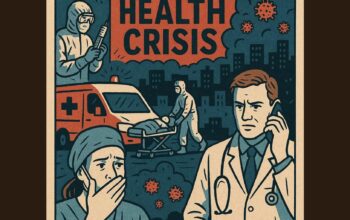by
The National Women in Agriculture Association gathered a group of global women who have sown seeds in every part of the world to discuss the Trump administration’s new policies and its impact on their ability to harness fresh food from the earth’s soil on March 26.
The convening was held in the Cannon House Office Building for National Women in Agriculture Day, where speakers discussed government matters with callers from around the nation and world weighing in.
“We’re in a corporate government model now and we are trying to get constitutional principles back. We’re one nation under God. Nature is of God, and humans are of nature,” Deanna O’Connell, who represents Kentucky Women in Agriculture, said. “We’ve got to get back to some just basic foundational principles of how we’re not just taxpayers, we’re not just landowners, we’re not just small farmers. We’re literally, you know, natural beings of God.”
The LFS was set to supply $660 million to municipalities in 2025 for fresh produce to be delivered to schools and child care facilities, while the second program would have allocated $500 million this year to food banks who purchase local goods. In addition, LFPS reimburses states who buy food from farmers within the state or within 400 miles of the delivery destination.
Event speakers highlighted the importance of both programs, which ensure that specialty crop farmers can help provide access to non-toxic foods with secure financial support from the federal government.
Farmers who participated in the two terminated programs were required to grow products free of pesticides.
“They don’t want us to use any more chemical fertilizers, which means that it’s more expensive, except that it’s healthier, which is good for the growing long run and helps bring down health care costs. That’s fine,” Sharleen O. Jean Baptiste said. “We decided, let’s make sure that the pricing is right for the farmers.”
Baptiste used her cost analysis research to ensure each producer was able to be paid a fair living wage for their work. The LFPA often used the nonprofit’s numbers to determine price charts.
“We made the pricing right. We negotiated the price with Greater bank, Mutual Bank. We made that and so we were able to pay the farmer $2 for example, $2.50 per pound for green leafies, okra, $3 a pound,” she told attendees. “Those farmers were being paid on the side of the road, maybe 50 cents to a $1 a pound for those produce, but we were able to make sure that LFPA was on board because we researched the CFR (cost and freight) because that’s part of my background.”
Advocating for Farmers Across the South
Baptiste’s non-profit was asked to advocate for farmers in Florida, Mississippi, Texas and Arkansas due to their success in Louisiana.
She found that Mississippi guidelines were fickle and ineffective for the communities they serve.
The directive of the cooperative also emphasized the low pay rates for farmers seeking to sell to local food banks.
“I can’t pay those farmers 63 cents per pound, and that’s all LFPA under Mississippi was able to pay me,” Baptiste explained. “And I said, ‘I’m not going to be able to do that,’ which means I’m not going to be able to grow my co-op on 63 cents a pound.”
Participants explained that stable pricing is essential to maintaining a sound local farm which oftentimes operates as a small business.
“In Alabama, the LFPA kept changing the price of produce after contracts were signed. It makes it really difficult to do business with the state,” Audrey Haskin of Demopolis, Alabama, said during the event.
Now that the LFPA has been terminated nationwide, growers are forced to turn to other resources to support their farms.
“I think the most important thing that most people don’t realize is that small farmers, when you go to the store, you buy everything. What price do you pay? Retail. Everything you buy is retail. You don’t get any wholesale prices,” Kelly Jackson, a Florida farmer said. “Only if you’re a large farmer, you get wholesale prices. So everything that I buy is retail… Now when I sell it, what prices do I get? Wholesale. And that’s what’s most important, is everybody’s worried about cost. And that’s where these USDA programs come in.”
Many farmers, especially women, struggle to make ends meet with low payouts during harvest seasons.
According to the 2017 Census of Agriculture, more than half of all farms, 56%, had a female producer, while 9% of farms were run entirely by women. These female-operated farms accounted for 38% of U.S. agriculture sales and 43% of U.S. farmland.
Women led farmers earn 40% less than farms operated by men according to the American Farmland Trust.
“Small farm operators, we need help all the time. We might need a couple loads of dirt. We might have a pump that broke or other issues,” Jackson said. “We need a line of credit or, maybe some kind of stipend for beginning borrowers to help get them started for basic infrastructure stuff.”
Source: Published without changes from Washington Informer Newspaper




